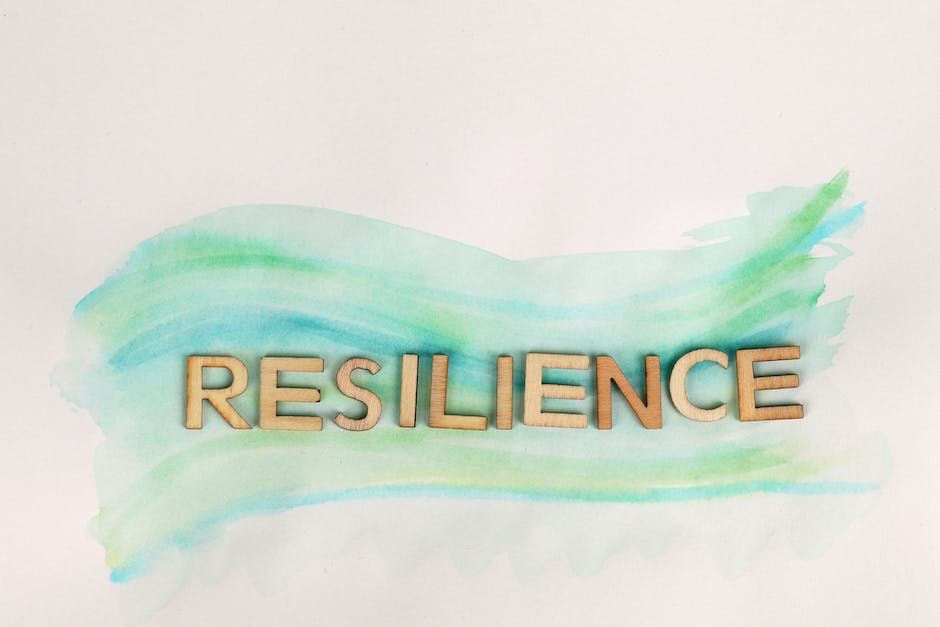Table of Contents
- Introduction
- Building Resilience: Key Traits and Habits of Successful Leaders
- Adapting to Change: Strategies for Navigating Uncertainty in Business
- Effective Communication: Enhancing Leadership Skills in a Dynamic Environment
- Developing a Growth Mindset: Embracing Challenges and Fostering Innovation
- Q&A
- Conclusion
“Adapt, Lead, Succeed: Unleashing Resilience in the Ever-Changing Business World”
Introduction
Strategies for Thriving as a Resilient Leader in a Dynamic Business Landscape
In today’s rapidly changing business landscape, leaders face numerous challenges that require resilience and adaptability. The ability to navigate uncertainty, embrace change, and inspire others is crucial for success. This introduction explores strategies for thriving as a resilient leader in a dynamic business environment. By developing key skills and adopting a proactive mindset, leaders can effectively lead their teams, drive innovation, and achieve long-term success in an ever-evolving marketplace.
Building Resilience: Key Traits and Habits of Successful Leaders

In today’s fast-paced and ever-changing business landscape, resilience has become a crucial trait for leaders to possess. The ability to adapt, bounce back from setbacks, and thrive in the face of adversity is what sets successful leaders apart from the rest. Building resilience is not something that happens overnight; it requires a combination of key traits and habits that can be developed over time.
One of the most important traits of a resilient leader is self-awareness. Being aware of one’s strengths, weaknesses, and emotions is essential for effectively managing oneself and others. Self-awareness allows leaders to recognize their own limitations and seek support when needed. It also enables them to understand how their actions and decisions impact those around them, fostering better relationships and collaboration within the team.
Another key trait of resilient leaders is a growth mindset. They view challenges and setbacks as opportunities for learning and growth, rather than as obstacles. This mindset allows them to approach difficult situations with a positive attitude and a willingness to try new approaches. They are not afraid to take risks and are open to feedback and constructive criticism, using it as a tool for improvement.
Resilient leaders also possess strong problem-solving skills. They are able to analyze complex situations, identify the root causes of problems, and develop effective solutions. They approach challenges with a systematic and logical mindset, breaking them down into smaller, manageable tasks. This enables them to tackle problems head-on and find innovative solutions that drive the organization forward.
In addition to these key traits, resilient leaders also cultivate certain habits that contribute to their success. One such habit is practicing self-care. They understand the importance of taking care of their physical, mental, and emotional well-being. They prioritize activities such as exercise, meditation, and spending time with loved ones, which help them recharge and maintain a healthy work-life balance.
Resilient leaders also prioritize building strong support networks. They surround themselves with trusted advisors, mentors, and colleagues who provide guidance, support, and different perspectives. These networks serve as a sounding board for ideas, a source of inspiration, and a support system during challenging times.
Furthermore, resilient leaders are effective communicators. They are able to clearly articulate their vision, goals, and expectations to their team. They actively listen to others, seeking to understand their perspectives and concerns. They provide regular feedback and recognition, fostering a culture of open communication and trust within the organization.
Lastly, resilient leaders are lifelong learners. They are constantly seeking new knowledge and skills to stay ahead in a rapidly changing business landscape. They invest in their own development through reading, attending conferences, and participating in professional development programs. They also encourage a culture of learning within their organization, promoting continuous improvement and innovation.
In conclusion, building resilience is a critical aspect of leadership in today’s dynamic business landscape. Resilient leaders possess key traits such as self-awareness, a growth mindset, and strong problem-solving skills. They also cultivate habits such as self-care, building support networks, effective communication, and lifelong learning. By developing these traits and habits, leaders can thrive in the face of challenges, inspire their teams, and drive their organizations towards success.
Adapting to Change: Strategies for Navigating Uncertainty in Business
In today’s fast-paced and ever-changing business landscape, the ability to adapt to change is crucial for leaders. Uncertainty is a constant factor, and being able to navigate through it is essential for success. Resilient leaders understand that change is inevitable and are prepared to face it head-on. They have strategies in place to not only survive but thrive in a dynamic business environment.
One of the key strategies for navigating uncertainty is to stay informed. Resilient leaders are constantly seeking knowledge and staying up-to-date with the latest trends and developments in their industry. They understand that knowledge is power and that being well-informed allows them to make better decisions. They read industry publications, attend conferences, and network with other professionals to gain insights and perspectives that can help them navigate through uncertain times.
Another important strategy for thriving as a resilient leader is to foster a culture of adaptability within their organization. Resilient leaders understand that they cannot do it all alone and that their team plays a crucial role in navigating uncertainty. They encourage their employees to embrace change and provide them with the necessary tools and resources to adapt. They create an environment where innovation and creativity are valued, and where employees feel empowered to take risks and try new approaches.
Communication is also a vital aspect of thriving as a resilient leader. During times of uncertainty, it is crucial to keep the lines of communication open with employees, stakeholders, and customers. Resilient leaders are transparent and honest about the challenges they are facing and the steps they are taking to address them. They provide regular updates and seek feedback to ensure that everyone is on the same page and working towards a common goal. Effective communication builds trust and confidence, which is essential for navigating uncertainty successfully.
Flexibility is another key strategy for thriving as a resilient leader. Resilient leaders understand that plans may need to change and that they need to be adaptable. They are open to new ideas and are willing to adjust their strategies as needed. They are not afraid to take calculated risks and are willing to step outside of their comfort zone. By being flexible, resilient leaders can quickly respond to changes in the business landscape and seize new opportunities.
Lastly, resilient leaders prioritize self-care. Navigating uncertainty can be stressful and demanding, and it is important for leaders to take care of themselves both physically and mentally. They understand that they cannot pour from an empty cup and make it a priority to recharge and rejuvenate. They practice self-reflection, engage in activities that bring them joy, and surround themselves with a support system that can help them navigate through challenging times.
In conclusion, thriving as a resilient leader in a dynamic business landscape requires a combination of strategies. Staying informed, fostering adaptability, effective communication, flexibility, and self-care are all essential for navigating uncertainty successfully. Resilient leaders understand that change is inevitable and are prepared to face it head-on. By implementing these strategies, leaders can not only survive but thrive in a dynamic business environment.
Effective Communication: Enhancing Leadership Skills in a Dynamic Environment
Effective Communication: Enhancing Leadership Skills in a Dynamic Environment
In today’s fast-paced and ever-changing business landscape, effective communication is crucial for leaders to thrive and succeed. As a resilient leader, it is essential to possess strong communication skills that can adapt to the dynamic nature of the business world. This article will explore strategies for enhancing leadership skills through effective communication in a dynamic environment.
First and foremost, active listening is a fundamental skill that resilient leaders must possess. In a dynamic business landscape, information is constantly evolving, and leaders must be able to listen attentively to their team members, stakeholders, and customers. Active listening involves not only hearing what is being said but also understanding the underlying message and responding appropriately. By actively listening, leaders can gain valuable insights, build trust, and foster effective collaboration.
Another strategy for enhancing leadership skills in a dynamic environment is clear and concise communication. In a fast-paced business landscape, time is of the essence, and leaders must be able to convey their message quickly and effectively. Clear and concise communication involves using simple language, avoiding jargon, and getting straight to the point. By communicating clearly and concisely, leaders can ensure that their message is understood and acted upon promptly.
Furthermore, resilient leaders must be adept at adapting their communication style to different situations and individuals. In a dynamic business environment, leaders interact with a diverse range of people, each with their own communication preferences and styles. By being flexible and adaptable in their communication approach, leaders can build stronger relationships, motivate their team members, and resolve conflicts more effectively. This adaptability also allows leaders to navigate through the ever-changing business landscape with ease.
In addition to adapting their communication style, resilient leaders must also be skilled in delivering constructive feedback. In a dynamic environment, continuous improvement is essential for success. Leaders must be able to provide feedback that is specific, actionable, and focused on growth. By delivering constructive feedback effectively, leaders can inspire their team members to strive for excellence and foster a culture of continuous learning and development.
Moreover, resilient leaders must be proficient in leveraging technology to enhance their communication skills. In today’s digital age, technology plays a vital role in business communication. Leaders must be comfortable using various communication tools such as email, video conferencing, and instant messaging to connect with their team members and stakeholders. By harnessing the power of technology, leaders can overcome geographical barriers, facilitate remote collaboration, and stay connected in a dynamic business landscape.
Lastly, resilient leaders must prioritize transparency and authenticity in their communication. In a rapidly changing business environment, trust is paramount. Leaders must be open and honest in their communication, sharing both successes and challenges with their team members and stakeholders. By being transparent and authentic, leaders can build trust, inspire loyalty, and foster a culture of transparency within their organization.
In conclusion, effective communication is a vital skill for resilient leaders to thrive in a dynamic business landscape. By actively listening, communicating clearly and concisely, adapting their communication style, delivering constructive feedback, leveraging technology, and prioritizing transparency and authenticity, leaders can enhance their communication skills and navigate through the ever-changing business landscape with confidence. As the business world continues to evolve, resilient leaders who prioritize effective communication will be well-equipped to lead their teams to success.
Developing a Growth Mindset: Embracing Challenges and Fostering Innovation
In today’s rapidly changing business landscape, leaders must possess a unique set of skills to navigate the challenges and uncertainties that come their way. One of the most important qualities a leader can possess is resilience. Resilient leaders are able to adapt to change, overcome obstacles, and thrive in the face of adversity. Developing a growth mindset is a crucial component of building resilience as a leader.
A growth mindset is the belief that abilities and intelligence can be developed through dedication and hard work. This mindset allows leaders to embrace challenges as opportunities for growth and learning. Instead of viewing setbacks as failures, resilient leaders see them as stepping stones to success. They understand that failure is not the end, but rather a valuable learning experience.
To develop a growth mindset, leaders must first embrace challenges. Instead of shying away from difficult tasks, they actively seek out opportunities to stretch their abilities. By taking on challenges, leaders can push themselves outside of their comfort zones and develop new skills. This willingness to embrace challenges sets resilient leaders apart from their counterparts.
In addition to embracing challenges, resilient leaders also foster innovation within their organizations. They understand that innovation is essential for staying ahead in a dynamic business landscape. Resilient leaders encourage their teams to think outside the box and come up with creative solutions to problems. They create an environment where ideas are valued and experimentation is encouraged.
To foster innovation, resilient leaders must create a culture of psychological safety within their organizations. This means creating an environment where employees feel safe to take risks and share their ideas without fear of judgment or retribution. When employees feel safe to express themselves, they are more likely to contribute their unique perspectives and ideas, leading to increased innovation.
Resilient leaders also understand the importance of continuous learning. They are constantly seeking out new knowledge and skills to stay ahead in their industry. They invest in their own personal and professional development, attending conferences, workshops, and seminars to expand their knowledge base. By continuously learning and growing, resilient leaders are able to adapt to the ever-changing business landscape.
In conclusion, developing a growth mindset is essential for thriving as a resilient leader in a dynamic business landscape. Embracing challenges and fostering innovation are key components of building a growth mindset. Resilient leaders understand that challenges are opportunities for growth and learning, and they actively seek out difficult tasks. They also foster innovation within their organizations by creating a culture of psychological safety and encouraging their teams to think outside the box. Additionally, resilient leaders prioritize continuous learning and invest in their own personal and professional development. By developing a growth mindset, leaders can navigate the challenges of the business landscape with resilience and thrive in the face of adversity.
Q&A
1. What are some key strategies for thriving as a resilient leader in a dynamic business landscape?
– Embrace change and adaptability
– Foster a culture of innovation and continuous learning
– Build strong relationships and networks
– Develop effective communication and collaboration skills
– Prioritize self-care and stress management
2. How can leaders embrace change and adaptability?
– Stay informed about industry trends and market dynamics
– Encourage a growth mindset among team members
– Emphasize the importance of flexibility and agility in decision-making
– Seek feedback and input from employees and stakeholders
– Continuously evaluate and adjust strategies and goals as needed
3. What are some ways to foster a culture of innovation and continuous learning?
– Encourage experimentation and risk-taking
– Provide resources and support for professional development
– Promote cross-functional collaboration and knowledge sharing
– Recognize and reward innovative ideas and initiatives
– Create a safe and inclusive environment that encourages diverse perspectives
4. How can leaders prioritize self-care and stress management?
– Set boundaries and establish a healthy work-life balance
– Delegate tasks and empower team members to take on responsibilities
– Practice mindfulness and stress-reducing techniques
– Seek support from mentors, coaches, or peers
– Take regular breaks and engage in activities that promote relaxation and well-being
Conclusion
In conclusion, in order to thrive as a resilient leader in a dynamic business landscape, it is crucial to adopt certain strategies. These strategies include embracing change and uncertainty, developing strong communication and collaboration skills, fostering a culture of innovation and adaptability, prioritizing self-care and well-being, and continuously learning and evolving. By implementing these strategies, leaders can navigate the challenges of a dynamic business landscape and position themselves and their organizations for long-term success.




